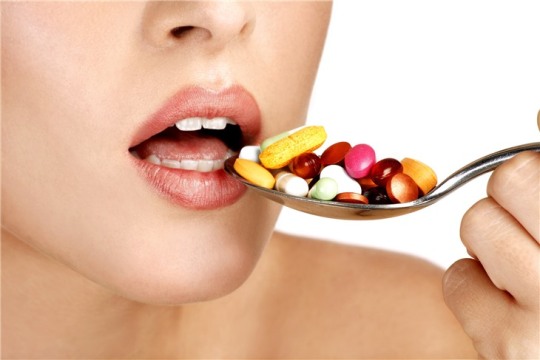#Mineral Ingredients Market Opportunity
Text
Global Mineral Ingredients market Size Expected To Reach USD 16800 Million With CAGR 5.60% By 2030

The Global Mineral Ingredients market size was reasonably estimated to be approximately USD 11200 Million in 2023 and is poised to generate revenue over USD 16800 Million by the end of 2030, projecting a CAGR of around 5.60% from 2023 to 2030.
The mineral ingredients market is witnessing robust growth driven by the increasing awareness of health and wellness, coupled with the rising demand for functional and fortified foods. As consumers become more conscious of their dietary choices, the importance of essential minerals in promoting overall well-being has gained prominence. This market encompasses a wide range of minerals, including but not limited to calcium, magnesium, iron, zinc, and selenium, which find applications in various industries such as food and beverages, pharmaceuticals, and cosmetics.
The food and beverage industry holds a significant share in the mineral ingredients market, with a growing emphasis on developing products that not only satiate taste preferences but also contribute to nutritional requirements. Additionally, the pharmaceutical sector is integrating mineral ingredients into supplements, recognizing their pivotal role in preventing and addressing mineral deficiencies. As the global population continues to grow and age, the demand for mineral ingredients is expected to rise, presenting lucrative opportunities for market players.
Leading players involved in the Mineral Ingredients Market include:
"BASF, Cargill, DuPont, Lonza, Pfizer, Cognis , Koninklijke DSM N.V, Arla Foods Amba, Akzonobel N.V., Balchem Corporation, Minerals Technologies Inc, Gadot Biochemical Industries Ltd, Yara International ASA, Jungbunzlauer Suisse AG, Compass Minerals International Inc,Corbion N.V and Other Major Players."
Get Sample Report: -
The latest research on the Mineral Ingredients market provides a comprehensive overview of the market for the years 2023 to 2030. It gives a comprehensive picture of the global Mineral Ingredients industry, considering all significant industry trends, market dynamics, competitive landscape, and market analysis tools such as Porter's five forces analysis, Industry Value chain analysis, and PESTEL analysis of the Mineral Ingredients market. Moreover, the report includes significant chapters such as Patent Analysis, Regulatory Framework, Technology Roadmap, BCG Matrix, Heat Map Analysis, Price Trend Analysis, and Investment Analysis which help to understand the market direction and movement in the current and upcoming years. The report is designed to help readers find information and make decisions that will help them grow their businesses. The study is written with a specific goal in mind: to give business insights and consultancy to help customers make smart business decisions and achieve long-term success in their particular market areas.
Market Driver:
One of the primary drivers propelling the mineral ingredients market is the increasing prevalence of health-conscious consumer behavior. As lifestyles become more fast-paced and stressful, there is a growing realization of the need for a balanced diet to maintain optimal health. Minerals play a crucial role in various physiological functions, including bone health, immune system support, and energy metabolism. This heightened awareness among consumers regarding the benefits of minerals is encouraging the incorporation of mineral-rich ingredients into daily diets.
The rise in chronic health conditions, such as osteoporosis and anemia, has further accentuated the importance of mineral supplementation. This has led to a surge in demand for food and beverage products fortified with essential minerals, driving innovation and product development in the market. The increasing focus on preventive healthcare and the pursuit of a holistic approach to well-being are fostering the growth of the mineral ingredients market.
Market Opportunity:
An exciting opportunity within the mineral ingredients market lies in the development of personalized nutrition solutions. With advancements in technology and an increasing understanding of individual health needs, there is a growing trend toward personalized diets and nutritional plans. Mineral ingredients, with their diverse range of health benefits, can be tailored to meet specific nutritional requirements based on factors such as age, gender, and health conditions.
The integration of mineral ingredients into personalized nutrition programs presents a unique opportunity for market players to differentiate their products and cater to the evolving demands of consumers. Customized mineral formulations, backed by scientific research, have the potential to not only address prevalent health issues but also contribute to preventive healthcare. As consumers seek more tailored approaches to nutrition, leveraging this opportunity can position companies at the forefront of innovation in the mineral ingredients market.
If You Have Any Query Mineral Ingredients Market Report, Visit:
Segmentation of Mineral Ingredients Market:
By Type
Macronutrients
Micronutrients
By Form
Liquid
Powder
Others
By Application
Bakery & Confectionery
Food Supplements
Ready to Eat Foods
Cosmetics & Personal Care
Pharmaceuticals
Others
An in-depth study of the Mineral Ingredients industry for the years 2023–2030 is provided in the latest research. North America, Europe, Asia-Pacific, South America, the Middle East, and Africa are only some of the regions included in the report's segmented and regional analyses. The research also includes key insights including market trends and potential opportunities based on these major insights. All these quantitative data, such as market size and revenue forecasts, and qualitative data, such as customers' values, needs, and buying inclinations, are integral parts of any thorough market analysis.
Market Segment by Regions: -
North America (US, Canada, Mexico)
Eastern Europe (Bulgaria, The Czech Republic, Hungary, Poland, Romania, Rest of Eastern Europe)
Western Europe (Germany, UK, France, Netherlands, Italy, Russia, Spain, Rest of Western Europe)
Asia Pacific (China, India, Japan, South Korea, Malaysia, Thailand, Vietnam, The Philippines, Australia, New Zealand, Rest of APAC)
Middle East & Africa (Turkey, Bahrain, Kuwait, Saudi Arabia, Qatar, UAE, Israel, South Africa)
South America (Brazil, Argentina, Rest of SA)
Effective Points Covered in Mineral Ingredients Market Report: -
Details Competitor analysis with accurate, up-to-date demand-side dynamics information.
Standard performance against major competitors.
Identify the growth segment of your investment.
Understanding most recent innovative development and supply chain pattern.
Establish regional / national strategy based on statistics.
Develop strategies based on future development possibilities.
Purchase This Reports: -
About Us:
We are technocratic market research and consulting company that provides comprehensive and data-driven market insights. We hold the expertise in demand analysis and estimation of multidomain industries with encyclopedic competitive and landscape analysis. Also, our in-depth macro-economic analysis gives a bird's eye view of a market to our esteemed client. Our team at Pristine Intelligence focuses on result-oriented methodologies which are based on historic and present data to produce authentic foretelling about the industry. Pristine Intelligence's extensive studies help our clients to make righteous decisions that make a positive impact on their business. Our customer-oriented business model firmly follows satisfactory service through which our brand name is recognized in the market.
Contact Us:
Office No 101, Saudamini Commercial Complex,
Right Bhusari Colony,
Kothrud, Pune,
Maharashtra, India - 411038 (+1) 773 382 1049 +91 - 81800 - 96367
Email: [email protected]
#Mineral Ingredients#Mineral Ingredients Market#Mineral Ingredients Market Size#Mineral Ingredients Market Share#Mineral Ingredients Market Growth#Mineral Ingredients Market Trend#Mineral Ingredients Market segment#Mineral Ingredients Market Opportunity#Mineral Ingredients Market Analysis 2023#US Mineral Ingredients Market#Mineral Ingredients Market Forecast#Mineral Ingredients Industry#Mineral Ingredients Industry Size#china Mineral Ingredients Market#UK Mineral Ingredients Market
0 notes
Text

#Mineral Ingredients Market#Mineral Ingredients Size#Mineral Ingredients Growth#Mineral Ingredients Trend#Mineral Ingredients segment#Mineral Ingredients Opportunity#Mineral Ingredients Analysis 2024#Mineral Ingredients Forecast
0 notes
Text
hold your fire (by the throat) - chapter 4
One Piece | Zosan | Post-Wano AU where Sanji slowly loses his emotions
Chapter 4: the devil that you forgot
“What the hell do you think you’re doing?”
“Putting away the groceries,” Zoro says, like it’s obvious.
Sanji is going to break his nose. “Why?”
Preview:
The next morning, Robin comes with him to buy groceries after breakfast. To take a look at what’s on sale, she says, but Sanji chooses to believe it’s because she’s irresistibly drawn to his charm and good looks. And who is he to say no to an outing with a heavenly angel?
When they arrive at the open air market, there’s not too much of a crowd, probably because it’s only an hour past dawn. He made sure to cook breakfast earlier than usual today because he wanted to get the fuck off the ship as soon as possible after baring his insides to the shitty mosshead of all people yesterday. It means that the late-risers won’t be getting freshly made food, but he can take the blow to his pride as a chef this one time.
As he stews over this, Robin passes him a pouch of berry. “This is from Nami. It should be more than enough, according to her.”
“Ah, Nami-san’s so generous! I won’t spend a penny more than I need to,” Sanji promises. He withdraws the shopping list he drew up last night after taking inventory. “Spices first, I think.”
Though he knows it’s seen as a chore to some of the others, grocery shopping is one of his favorite parts of visiting new places. With all the wildly different climates and cultures of each island on the Grand Line, it’s a perfect way to discover new flavors and ingredients that he hasn’t come across before. As someone who’s constantly looking for new ways to expand his repertoire of dishes, he couldn’t ask for a better opportunity.
Flitting from stall to stall, he samples various spices and marinades and produce, crossing off items on his list as he goes. He also finally learns that the island is called Quarry Island, apparently named for the nearby quarry which supplies the mineral ore that makes up their main export. He doesn’t particularly care about the details, he’s just thankful for the way it distracts him from brooding over yesterday’s discovery.
He hadn’t slept well last night, tossing and turning and thinking about what it could mean for him. Because the mosshead could be right that it’s nothing, but he could also be wrong. The little sleep that Sanji had managed hadn’t been restful at all, full of strange half-forgotten dreams, and he’d woken up feeling like shit, with a deep sense of foreboding that he couldn’t shake off.
Now, in the daylight, Sanji refuses to let himself dwell on it too long, or else he’s going to start screaming and never stop. He focuses on the food instead. This island seems to lean towards West Blue cuisine, he notices, with a prevalence of fragrant herb-infused sauces and hearty root vegetables, the kinds that pair well with shellfish. Makes sense, he supposes, given the abundance of crustaceans in the bay.
There’s a booth selling fried crickets that he steers clear of. Even though he’s usually open to trying all sorts of new foods no matter how weird or gross, insects are the one thing he’d really rather not eat if he doesn’t have to. He suppresses a shudder, feeling the phantom sensation of things crawling over his neck, his cheeks, his eyes, cruel laughter echoing through the suffocating weight of a mask on his head.
Abort. Abort. Think about something else.
He’s determinedly examining some regional mushrooms—and wondering if he could cook it in a way that even Usopp would like—when a disembodied mouth sprouts in front of him. Robin’s voice says, “Sanji, could you come over here? To your left.”
(continue on AO3)
#one piece#zosan#sanzo#sanji#zoro#black leg sanji#roronoa zoro#emotionless sanji au#hold your fire by the throat#mine#my writing
26 notes
·
View notes
Text
Moringa Magic
Supplements - Health.
**Moringa Magic Supplements: A Health Revolution**
**Introduction to Moringa Magic**
I recently had the opportunity to try Moringa Magic Supplements, a product that has been making waves in the health and wellness community. From the moment I began using it, I noticed significant improvements in my overall well-being. Moringa Magic promises to be a powerful supplement derived from the moringa tree, renowned for its remarkable nutritional profile. This review delves into my personal experience with the product and highlights why it stands out in a crowded market.
**Exceptional Nutritional Benefits**
I used Moringa Magic Supplements and was immediately impressed by the comprehensive array of nutrients packed into each capsule. The moringa tree, often referred to as the "miracle tree," is rich in vitamins A, C, and E, which are crucial for maintaining healthy skin, boosting the immune system, and providing antioxidant protection. The supplement also contains essential minerals such as calcium, iron, and magnesium, which support bone health, energy levels, and overall vitality. Incorporating Moringa Magic into my daily routine has noticeably improved my energy levels and contributed to a more balanced nutritional intake.
**Enhanced Energy and Vitality**
One of the most notable changes I experienced while using Moringa Magic Supplements was a marked increase in my energy levels. Within a few days of starting the supplement, I felt more invigorated and less fatigued throughout the day. This boost in energy has been a game-changer, allowing me to tackle daily tasks with renewed enthusiasm and focus. The natural ingredients in Moringa Magic work synergistically to enhance overall vitality, making it an excellent choice for those looking to overcome sluggishness and boost their daily performance.
**Support for Healthy Digestion**
I also found that Moringa Magic Supplements positively impacted my digestive health. The moringa plant is known for its high fibre content, which promotes regular bowel movements and supports a healthy digestive system. After incorporating Moringa Magic into my diet, I noticed improved digestive regularity and a reduction in bloating. This benefit has greatly contributed to my overall sense of well-being and comfort, making Moringa Magic an invaluable addition to my health regimen.
**Natural and Sustainable Choice**
What stands out about Moringa Magic Supplements is their commitment to natural and sustainable practices. The product is made from organically grown moringa leaves, ensuring that I am consuming a supplement free from harmful chemicals and additives. The company's dedication to environmentally friendly practices is also commendable, as it supports sustainable agriculture and reduces the ecological footprint. This alignment with ethical and natural principles adds an extra layer of satisfaction to using the product.
**Convenient and Effective**
Finally, I found Moringa Magic Supplements to be incredibly convenient to use. The capsules are easy to incorporate into my daily routine, and the recommended dosage is straightforward. The supplement's effectiveness, combined with its ease of use, makes it an ideal choice for busy individuals seeking to enhance their health without complicating their schedules.
**Conclusion**
In conclusion, Moringa Magic Supplements have proven to be a valuable addition to my health and wellness routine. The impressive nutritional benefits, increased energy, improved digestion, and commitment to natural practices make it a standout product. If you’re looking for a supplement that delivers on its promises and supports overall well-being, Moringa Magic is definitely worth considering.

2 notes
·
View notes
Text






















World Milk Day
Start your day with a glass of calcium-rich milk, visit a local dairy farm, or see what milk alternatives like soy, oat, or almond milk you might enjoy.
It’s a well-known fact that milk is rich with calcium, a mineral that promotes healthy teeth and bones. June 1st is the date that has been set aside to celebrate Milk Day. And, of course, this is a celebration that can take place anywhere in the world, given that milk is a global food!
The use of milk in food and drink has been happening for thousands of years. As most people can appreciate, milk is an integral part of most people’s daily lives, and there’s an entire industry that revolves around it as well.
Milk is a liquid food rich with nutrients like calcium. It’s a food product that is primarily used by mammals during infancy. Although, in the case of humans, people tend to consume it in adulthood, as most adult humans can digest the lactose in milk.
Of course, milk isn’t only available for drinking. It’s an essential ingredient for dairy foods such as butter, cream, ice cream, and cheese. Milk can also be found as an ingredient used in other types of foods, such as bread, cakes, cereal, desserts and so much more.
There is no denying that milk has become a mainstay of most people’s diets today. It’s also one of the cheapest food products to buy, given the industrial scale of milk production in the world. Some of the largest producers of milk are the United States, India, and China.
History of Milk Day
Milk Day became a globally celebrated event on June 1st, 2001. The global celebration, in general, can be traced back to the United Nations (UN). In particular, the FAO (Food and Agriculture Organization) of the UN has been responsible for organizing and marketing World Milk Day throughout the globe.
More than two decades ago, the FAO proposed a global Milk Day to recognize the importance of milk and the role that it plays in our world. In addition, this day was also created to provide direct focus to the milk industry and publicize the various activities connected with it. In fact, the dairy industry supports the livelihoods of approximately 1 billion people throughout the world!
But even before this day was created in 2001, Milk Day was celebrated by some other nations throughout history. In the British Isles, for example, a Milk Day celebration (“Imbolc” – Celtic for “milk”) took place in the pre-Christian era.
Considering the fact that over six billion people worldwide consume milk and dairy, it’s no surprise there was a need to celebrate this healthy, delicious beverage!
How to Celebrate Milk Day
June 1st is a day that many people may want to write their diaries. Milk plays such a significant role in the world that should certainly be celebrated in style!
But what can be done to celebrate such a momentous occasion? Try out some of these ideas for enjoying Milk Day:
Get the Day Started with a Glass of Milk
Why not celebrate today with a glass of fresh, cold milk in the morning to kick-start the day?! But don’t stop there. How about enjoying a big bowl of cereal full of delicious milk?
Of course, after drinking that glass of milk, don’t forget to snap a photo of that beautiful milk mustache! Share it with the world on social media to remind everyone else to enjoy Milk Day too.
Join an Official Milk Day Celebration
As a worldwide event, Milk Day comes with all kinds of official opportunities to celebrate! In 2020, more than 400 Milk Day campaigns took place in over 68 countries all over the globe, so there should be plenty to join in with again this year. Here are some events that have taken place in previous years:
World Milk Day Milk Donation. Happening in New York State, USA, several organizations have gotten together to provide a free gallon of milk to the people in their local community who visit a dairy farm.
Live Recipes by Renowned Chefs from Around the World. This live Facebook event has been hosted by Amul, India, which is the country’s largest dairy brand, with the intention of showing the importance of milk throughout different countries and cultures.
International Dairy Federation Raise a Glass Event. Hosted by the IDF in Brussels, Belgium, this event involved hosting a toast to milk from people all around the world.
Check the World Milk Day website to get access to all the needed information to make plans for this day.
Visit a Local Dairy or Farm
For those who have some extra time, especially those with kids who are ready to learn, consider visiting a local dairy to learn the process of milking cows and collecting the milk. This will also lead to learning about pasteurizing and homogenizing milk, methods used to filter milk and keep it long-lasting.
If there are no cow farms nearby, consider visiting a smaller farm that has goats. It’s still possible to learn about everything milk-oriented but may be more accessible because they might be smaller and locally owned.
Enjoy Other Milk Products
For lunch, why not have a mozzarella or Margherita pizza and drink a glass of chocolate milk to wash it down? After that, those who are still feeling hungry could always have some delicious ice cream for dessert!
Other options for enjoying milk products on this day (and every day!) include yogurt, sour cream, butter, custard, cream and all of the recipes that can be made from them.
Try a Milk Alternative
For folks who have trouble digesting dairy easily, why not try other non-dairy milk alternatives? Here are some popular options:
Soy Milk. A favorite as one of the early milk alternatives, this one is made from soybean plants that grow fairly prolifically in many places.
Almond Milk. Made by crushing almonds and blending them with water, and then straining out the mix to remove any solids that are left, this nutty milk is filled with protein.
Coconut Milk. This one uses the white, fleshy part of the coconut, grating it and soaking it in water. The cream rises and is skimmed off, then what’s left is strained to extract the coconut milk.
Whether with a milk product or a dairy alternative, celebrating World Milk Day can be loads of fun!
Source
#chocolate cake#Rice pudding with cinnamon#flan de huevo#Pudim flan#Crème caramel#chocolate pie#whipped cream#dessert#Spain#travel#original photography#summer 2021#vacation#World Milk Day#1 June#WorldMilkDay#Princess cake#Strawberry Shortbread#USA#Strawberry Milkshake#Chocolate Banana Milkshake#Berries&Cream#Coconut Cream Pie#Banana Cream Pie#Strawberry Cheesecake Milkshake#Pecan Praline Milkshake#food#restaurant#Coconut Cream Pie Cheesecake#Pecan Pie
2 notes
·
View notes
Text
Iodine Derivatives Market Size Estimation, Consumption, And Growth Opportunities Till 2028

COVID-19 IMPACT ANALYSIS ON GLOBAL IODINE DERIVATIVES MARKET
The exclusive COVID-19 impact analysis report by Axiom MRC provides a 360 degree analysis of micro and macro-economic factors on the global iodine derivatives market. In addition, complete analysis of changes on the global iodine derivatives market expenditure, economic and international policies on supply and demand side. The report also studies the impact of pandemic on global economies, international trade, business investments, GDP and marketing strategies of key players present in the market. During COVID-19 pandemic, global iodine derivatives market was more or less affected due to supply chain distribution, declining demand for iodine derivatives from various application like food & feed, agrochemical, electronic, which has certainly affected the market growth to major extend. However, post COVID-19 the market has witnessed the rising new growth opportunities and is expected to have emerging demand in upcoming years.
To know the scope of our report get a sample on https://www.axiommrc.com/request-for-sample/11217-iodine-derivatives-market-report
MARKET OVERVIEW- GLOBAL IODINE DERIVATIVES MARKET
MARKET DRIVERS
The key factor driving the market growth are Increasing use of iodine derivatives in human food and animal feed. Iodine is an essential nutrient for both humans and animals. Deficiencies of iodine in animals can cause severe health effects such as goitre and reduced growth rates. Owing to the scarcity of iodine, it is often necessary to supplement animal feed with various forms of iodine like calcium iodate and ethylenediamine hydroiodide (EDDI). The iodine in the feeds support healthy growth in animals like broiler chickens. For instance, in September 2018, Micronutrients USA and Kemin Industries launched Intelli Bond VITAL 5 CR as an essential nutrition package containing six essential trace minerals. The introduction of Intelli Bond VITAL 5 Cr comes at a time when concern is rising about the integrity of feed ingredients sourced from outside the United States. The new offering delivers zinc, manganese, copper, cobalt and iodine from Micronutrient’s essential Intelli Bond VITAL 5 blends, with the added power of Kemin’s Kem Trace Chromium.
MARKET OPPORTUNITY
The global iodine derivatives market is expected to witness increasing new growth opportunities for market with growing iodine deficiency among people. Iodine deficiency is still a public health problem in 54 countries. A total of 36.5% (285 million) school-age children were estimated to have an insufficient iodine intake, ranging from 10.1% in the WHO region of the Americas to 59.9% in the European region. Iodine deficiency is a major threat to the health and development of population across the globe, primarily in preschool children and pregnant women. When requirement for iodine is not met, thyroid hormone synthesis is impaired, resulting in a series of functional and development abnormalities collectively referred to as iodine deficiency disorders (IDD). Conditions related to iodine deficiency comprises goitre, still-birth and miscarriage, hypothyroidism and impaired growth.
MARKET RESTRAINTS
The major restraining factor for the global iodine derivatives market is toxicity of iodine and health related issue. Iodine induced hyperthyroidism may be dangerous in patients with underlying heart diseases. In iodine sufficient individuals, iodine excess causes elevated thyroid stimulating hormones levels, which inhibits thyroid hormone production leading to hypothyroidism and goitre. Iodine toxicity is a rare condition which requires a broad initial diagnosis and heightened suspicion. These patients may exhibit vague signs and symptoms like nausea, vomiting, and diarrhoea. While history taking may reveal the toxicity, the cause is difficulty to determine without further evaluation.
MARKET GROWTH CHALLENGES
The COVID-19 pandemic has disrupted global supply chain networks in an unprecedented way. Supply-demand imbalances have pushed manufacturers across sectors to grapple with multiple challenges including rising commodity prices, logistics disruptions & port congestions, and shifting customer behaviour. At the same time, the move towards sustainability is driving almost all industry sectors towards sustainable production and operations that is good for people and the planet.
CUMULATIVE GROWTH ANALYSIS
The report provides in-depth analysis of global iodine derivatives market, market size, and compound annual growth rate (CAGR) for the forecast period of 2022-2028, considering 2021 as the base year. With increasing demand for various iodine derivatives in various applications has led the increasing demand for market and is expected to witness the growth at a specific CAGR from 2022-2028.
MARKET SEGMENTAL OVERVIEW
The global iodine derivatives market comprises of different market segment like type, application and geography.
IODINE DERIVATIVES MARKET BY TYPE
The type studied in the global iodine derivatives market are potassium iodate, sodium iodate, calcium iodate, potassium iodide, copper iodide, ethylenediamine dihydroiodide, and others. Potassium iodide has register major market share during the estimated time period (2022-2028) and is likely to maintain its dominance over the estimated time period. With wide range of application and uses in various application industry is expected to drive the demand for global iodine derivatives market. Furthermore, ideally potassium iodide is mostly present in colourless crystals or white powder, which is odourless. The taste of the chemical is almost like saline and slight bitter. It is often used as nutritional supplement in animal feed and in human diet, in treatment of hyperthyroidism used as expectorant. Also used in some disinfectant and hair treatment chemicals.
IODINE DERIVATIVES MARKET BY APPLICATION
The global iodine derivatives market finds its major application in pharmaceutical, food & feed, cosmetics, agrochemical, electronics, nylon production, and others (chemical, sanitation). Pharmaceutical is likely to gain major market share during the estimated time period. The market players have witnessed rising new growth opportunities in this application sector as in pharmaceutical, the iodine derivatives are mostly used for preparing disinfectant, bactericides, and analgesics among others like tincture of iodine. Besides, the pharma companies often have increasing demand for various potassium iodate with rapid demand for various pharma products to maintain their patient engagement where pharmaceutical chemicals have witnessed demand globally. Besides, with increasing spread of COVID-19 the market has specifically increased its requirement.
IODINE DERIVATIVES MARKET BY GEOGRAPHY
The global iodine derivatives market is studied for the following region North America, Europe, Asia-Pacific and Rest of the world (RoW). North America is likely to witness rising demand for iodine derivatives market. North America dominates the iodine derivative market due to the rise in the meat consumption. Furthermore, the increase in the poultry industry will further boost the growth of the iodine derivative market in the region during the forecast period. Europe is projected to observe significant amount of growth of the iodine derivative market due to the rise in the healthcare expenses spent by the government. Moreover, the increase in the number of cancer patients is further anticipated to propel the growth of the iodine derivative market in the region in the coming years.
COMPETITIVE LANDSCAPE ANALYSIS
The competitive landscape analysis of iodine derivatives market is certainly based range of market players operating in the chemical & material market with increasing demand for production of iodine derivatives. Besides, number of market players offered wide range of products for different application in various geographic locations. The market has major competitive analysis based on new product launches as well as other developments.
The key players studied in market are Iofina plc., Godo Shigen Co., Ltd, Nippoh Chemicals., Zibo Wankang Pharmaceutical Chemical., Nanjing Taiye Chemical Industry, Qingdao Gimhae Iodide Chemical Co, Ajay-SQM Group., Infinium Pharmachem Pvt Ltd, Amphray Laboratories, Samrat Pharmachem Limited, Calibre Chemicals Pvt. Ltd, Omkar Speciality Chemicals Ltd, Merck Ltd., among others.
RECENT DEVELOPMENT:
January 2018: Iofina plc. Announced to strategically expand iodine production by bringing IO#7 into production, a plant which will significantly increase iodine output whilst reducing the Group’s overall iodine production cost.
Buy now Iodine Derivatives Market Report https://www.axiommrc.com/buy_now/11217-iodine-derivatives-market-report
About Us:
Axiom Market Research & Consulting™ is a full-service market research and data analytics company providing key market intelligence to global companies to take informed business decisions pertaining to their marketing strategy, investments, new product launches, market competition, consumer or end users, social media trends etc.
Axiom Market Research & Consulting™ offers market research services such as syndicated market research, custom market research, business consulting, and consumer/end user surveys. Under Business to Consumer (B2C) market research offerings, Axiom MRC assists its clients in finding quantitative information/preferences of its brands and services such as, awareness, usages, satisfaction, tracking, ethnicity etc. Axiom MRC offers data collection services through online surveys, social media, data processing and interpretation.
Axiom MRC with its experienced team of research and data analysts, has delivered more than 5000+ Market Research Projects, 3800+ Data Analytics Projects, 1200+ Business Support Projects and has a 800+ Global Client Base. Axiom Market Research & Consulting™ aims to become the preferred market research and data analytics company by providing key market intelligence solutions for client’s business growth.
Contact Us:
Axiom Market Research & Consulting™
3 Germay Dr. Ste 4 - 4666
Wilmington DE 19804
U.S.:- + 1 (845) 875-9786
U.K.:- + 44 (0) 20 3286 9707
Email: [email protected]
Website: https://www.axiommrc.com/
Blog: https://industrywatch24.com/
Follow On
LinkedIn: https://www.linkedin.com/company/axiom-market-research-and-consulting/
Twitter: https://twitter.com/AxiommrcCom
Instagram: https://www.instagram.com/axiom_mrc
Facebook: https://www.facebook.com/axiommrc
#news#newsletter#chemical#material#trending#marketanalysis#marketgrowth#research#viral#iodine#derivatives#market#pressrelease#viralvideos
1 note
·
View note
Text
The Rise of Natural Ingredients Prompts Growth in the Beauty Supplements Market
The beauty supplements market consists of oral dietary supplements aimed at enhancing physical beauty by nourishing skin, hair, and nails from within. Beauty supplements contain vitamins, minerals, proteins, omega fatty acids, and other natural ingredients that are beneficial for overall health as well as skin, hair, and nail quality. They are available in the form of tablets, capsules, powders, soft gels and liquids. Beauty supplements offer several advantages over topical treatments like lotions and potions as they work from inside out to impart natural glow, strengthen hair follicles and improve skin elasticity. With rising health concerns, the demand for clean label products made from organic and natural ingredients is on the rise.
The Global Beauty Supplements Market is estimated to be valued at US$ 2979.84 Mn in 2024 and is expected to exhibit a CAGR of 5.5% over the forecast period between 2024 To 2031.
Key Takeaways
Key players operating in the Beauty Supplements market are Presto Geosystems, Polymer Group Inc., Strata Systems Inc., Armtec Infrastructure Inc., Maccaferri SPA, PRS Mediterranean Ltd., Maccaferri SPA, and Tensar International Ltd.
The Beauty Supplements Market Growth is witnessing high increasing demand for products with natural ingredients among health-conscious consumers. Various vitamins, minerals and antioxidant-rich supplements are gaining popularity for their ability to deliver results without any side effects.
The market is further strengthened by expansion of key players into international markets. Leading companies are focusing on geographic expansions and product launches catering to specific regional consumer needs to boost sales in foreign markets.
Market Key Trends
One of the key Beauty Supplements Market Size and Trends witnessed in the beauty supplements market is the rise of customized formulations. Manufactures are offering customized beauty supplements tailored to an individual's age, gender, skin and hair type. Through online consultations and diagnostic tests, they provide personalized recommendations and formulations targeted towards the unique nutritional needs of each consumer. This has increased customer stickiness and engagement with the brands.
Porter’s Analysis
Threat of new entrants: Dietary supplement industry has moderate barriers for new companies to enter due to regulations and capital requirements.
Bargaining power of buyers: Buyers have moderate bargaining power due to availability of substitutes and differentiation in products.
Bargaining power of suppliers: Suppliers have moderate bargaining power as raw materials for supplements are commoditized.
Threat of new substitutes: Threat of substitutes is moderate as new product innovations can disrupt the market.
Competitive rivalry: Industry faces high competition due to several large players.
Geographical Regions
North America currently dominates the beauty supplements market in terms of value, with the United States being the major contributor. Factors such as increasing spending on beauty and wellness products, rising awareness regarding the benefits of beauty supplements and presence of major manufacturers driving market growth in the region.
Asia Pacific region is expected to be the fastest growing market for beauty supplements during the forecast period. Increasing disposable incomes, growing health and wellness trends driving demand for nutritional and dietary supplements from countries like China and India will support market expansion. Rising urbanization and evolving consumer lifestyles are additional factors fueling market development opportunities across Asia Pacific.
Get more insights on Beauty Supplements Market
Unlock More Insights—Explore the Report in the Language You Prefer
French
German
Italian
Russian
Japanese
Chinese
Korean
Portuguese
Vaagisha brings over three years of expertise as a content editor in the market research domain. Originally a creative writer, she discovered her passion for editing, combining her flair for writing with a meticulous eye for detail. Her ability to craft and refine compelling content makes her an invaluable asset in delivering polished and engaging write-ups.
(LinkedIn: https://www.linkedin.com/in/vaagisha-singh-8080b91)

#Coherent Market Insights#Beauty Supplements Market#Beauty Supplements#Skin Health#Hair Growth#Nail Strength#Collagen#Anti-Aging#Glowing Skin#Vitamins For Beauty#Biotin#Hyaluronic Acid#Beauty Nutrition#Antioxidants
0 notes
Text
Rice Noodles Market Key Highlights and Future Opportunities - 2030
Rice Noodles Expected to Reach USD 9.53 Billion by 2030 with a CAGR of 14.63%
The Rice Noodles Market Share, valued at USD 3.19 billion in 2022, is anticipated to grow significantly, reaching an estimated value of USD 9.53 billion by 2030. This expansion reflects a compound annual growth rate (CAGR) of 14.63% during the forecast period from 2023 to 2030. The increasing demand for convenient and nutritious food, coupled with the rising popularity of rice noodles among health-conscious consumers, is driving this 's dynamic growth.
Dynamics
Growing Popularity of Asian Cuisines
In recent years, Asian cuisines, especially dishes like rice noodles, have seen a surge in popularity across the globe. The demand for authentic, culturally diverse food experiences has led to rice noodles becoming a staple in both households and restaurants outside of their traditional s. Western countries, particularly in North America and Europe, have witnessed a growing trend of incorporating rice noodles into fusion dishes as well as traditional Asian recipes.
As a gluten-free alternative to wheat-based noodles, rice noodles cater to the rising number of consumers with gluten intolerance or celiac disease. Additionally, their appeal as a healthier, lower-calorie option compared to traditional pasta further accelerates growth. The increasing adoption of vegan and plant-based diets also benefits the rice noodles , as they align well with the preferences of these consumer segments.

Health and Wellness Trends Drive Growth
The global shift toward healthier eating habits is a major catalyst for the growth of the rice noodles . Rice noodles, being made from rice flour and water, are naturally free from gluten, fat, and cholesterol. Consumers are becoming more aware of the benefits of rice noodles, including their easy digestibility, low calorie content, and ability to fit into various dietary requirements, including vegan, gluten-free, and low-carb diets.
This focus on health and wellness is also encouraging manufacturers to develop new product variants that cater to different nutritional needs, such as fortified rice noodles with added vitamins and minerals or organic versions that appeal to eco-conscious consumers.
Convenience and Versatility
Another driving force behind the rising demand for rice noodles is the increasing need for convenient and quick-to-prepare meal options. With more consumers leading fast-paced lifestyles, the need for time-saving yet nutritious food products is growing. Rice noodles, which cook quickly and can be incorporated into a wide variety of dishes, offer an ideal solution.
Their versatility in different cuisines—ranging from traditional Asian stir-fries and soups to modern, creative dishes in Western cuisine—also plays a key role in expansion. Rice noodles can be prepared with a variety of flavors and ingredients, making them suitable for a diverse range of consumers.
Segmentation
The rice noodles can be segmented based on type, distribution channel, and region. Each of these segments is poised for significant growth during the forecast period.
By Type:
Chinese Style: This segment dominates the , with Chinese-style rice noodles being the most commonly used globally. These noodles are available in various shapes and textures, including thin vermicelli, flat rice noodles, and thick noodles, making them popular in a wide range of dishes.
Western Style: Western-style rice noodles are gaining popularity in North America and Europe. Often used in fusion cuisine, these noodles are being adopted in non-traditional dishes, where chefs and home cooks experiment with incorporating them into Western-style stir-fries, salads, and casseroles.
Others: This segment includes specialty rice noodles, such as those flavored or mixed with ingredients like spinach, turmeric, or seaweed, to offer unique tastes and added nutritional benefits.
By Distribution Channel:
Supers and Hypers: As the most prominent distribution channel, supers and hypers hold the largest share of rice noodle sales globally. These large retail stores provide consumers with a variety of options and price points.
Convenience Stores: With their growing presence, convenience stores have become an essential distribution channel for rice noodles, especially for consumers seeking quick and easy meal solutions.
Independent Retailers: This segment, which includes smaller grocery stores and ethnic food s, is crucial in distributing rice noodles, particularly in regions with a high concentration of Asian communities.
Online Stores: E-commerce is growing rapidly as a distribution channel for rice noodles. With the increasing penetration of the internet and the rise of online grocery platforms, consumers are opting for the convenience of purchasing rice noodles from the comfort of their homes. This channel is expected to witness the fastest growth during the forecast period.
Regional Outlook
The global rice noodles is segmented into key regions including North America, Europe, Asia-Pacific, Latin America, and the Middle East & Africa.
Asia-Pacific: Dominating the , the Asia-Pacific region, led by China, Thailand, and Vietnam, accounts for the largest share of rice noodle consumption. This region’s deep-rooted culture of rice-based diets and the prevalence of rice noodles as a staple food continue to drive growth. The increasing population and urbanization in countries like India and Indonesia are also contributing to the rising demand.
North America: The North American is projected to experience rapid growth during the forecast period. The growing demand for gluten-free and healthy food options is a significant factor contributing to this growth. Additionally, the increasing influence of Asian cuisines in the region, along with the rising adoption of rice noodles in fusion dishes, is further driving expansion.
Europe: Europe is also witnessing increased demand for rice noodles, fueled by the growing trend of health-conscious and dietary-specific food consumption. The region’s focus on organic and natural food products aligns well with the consumption of rice noodles, particularly in countries like the UK, Germany, and France.
Latin America and Middle East & Africa: These regions are emerging s for rice noodles, with growing urbanization and an increasing awareness of global cuisines driving demand. The adoption of rice noodles in these regions is anticipated to rise steadily as international cuisines become more accessible.
Conclusion
The rice noodles is set for robust growth in the coming years, driven by the increasing demand for healthier, convenient, and versatile food products. As consumers around the world embrace gluten-free and plant-based diets, the for rice noodles is expected to expand significantly. Manufacturers and retailers are capitalizing on this trend by offering innovative product variants and expanding their distribution channels to meet the evolving needs of modern consumers.
With a projected CAGR of 14.63% from 2023 to 2030, the rice noodles is poised for a bright future, providing ample opportunities for growth and innovation in the global food industry.
Read More Details @ https://www.snsinsider.com/reports/rice-noodles-market-1921
Contact Us:
Akash Anand – Head of Business Development & Strategy
Phone: +1-415-230-0044 (US) | +91-7798602273 (IND)
SNS Insider Offering/ Consulting Services:
Go To Market Assessment Service
Total Addressable Market (TAM) Assessment
Competitive Benchmarking and Market Share Gain
1 note
·
View note
Text
0 notes
Text
Vitamin C Ingredients Market Potential Growth, Share, Demand and Analysis of Key Players – Forecasts to 2033
According to an industry report, the vitamin C ingredients Market is expected to generate US$ 2,704 million by 2023. Estimates indicate the market is forecast to reach US$ 4,657.5 million between 2023 and 2033, representing a CAGR of 5.6%. The rising incidence of cardiovascular diseases and increasing demand for skin care products are expected to drive the market for vitamin C ingredients.
Companies that manufacture food, beverages, and dietary supplements may experience fluctuations in demand due to changes in consumer preferences, health trends, and research on its benefits. Since Vitamin C is a well-known antioxidant and contributes to the immune system, it has historically been in high demand. Water-soluble vitamins like this need to be replenished regularly through diet or supplements in order for the human body to store them. In addition to being found in many fruits and vegetables, vitamin C is also commonly found in food and beverage products, cosmetics, and dietary supplements.
Several studies have suggested that vitamin C can be beneficial to heart health, especially when consumed in moderation. In addition to lowering blood pressure and reducing LDL cholesterol, it improves endothelial function, the key to a healthy circulatory system. Increasing stress levels and the occurrence of cancers are expected to grow the demand for vitamin C ingredients in the market. In studies, it has been proven that high doses of vitamin C could reduce the body’s stress response and reduce overall cortisol production.
Information Source: https://www.futuremarketinsights.com/reports/vitamin-c-ingredients-market
Key Takeaways from the Market Study
Between 2023 and 2033, the vitamin C ingredients market is likely to experience a CAGR of 5.6%.
Based on the report, the vitamin C ingredients market experienced a growth rate of 2.4% between 2018 and 2022.
The United States held 22.8% of the vitamin C ingredients market share in 2022.
With strong growth over the past few years, China accounted for a 7.9% CAGR in 2022.
According to estimates, Japan held a market share of 3.6% in 2022.
A 4% share of the global market for vitamin C ingredients was contributed by the German market in 2022.
By 2022, the United Kingdom represented a 3.8% revenue share in the vitamin C ingredient sales in the market.
“With chronic diseases on the rise and new products entering the market, the market is expected to see a growth in demand for vitamin C ingredients. Increasing demand for natural food ingredients combined with an increase in pharmaceutical and cosmetics demand will drive the market to grow,” says an FMI analyst.
Competitive Landscape
Vitamin C ingredients companies are engaging in various partnerships and collaborations to expand their business and gain synergistic benefits. As vitamin C ingredients are mostly used in bakery products, jams, and medicine along with sports nutrition, players in the vitamin C ingredients market are focusing their product offerings on food and beverage and pharmaceutical companies.
In April 2023, Unilever introduced a topical formula that uses vitamin C and olivine extract to promote youthful, vibrant skin. Unilever claims that the leave-on formula contains vitamin C dissolved in sodium ascorbyl phosphate and a olivine mineral extract that improves skin tone, skin brightness, and masks visible signs of aging. Formulas could be manufactured as liquids, lotions, creams, foams, and sticks, but serums and essences were ideal.
Know More about What the Vitamin C Ingredients Market Report Covers
Future Market Insights offers an unbiased analysis of the global vitamin C ingredients market, providing historical data for 2018 to 2022 and forecast statistics from 2023 to 2033.
To understand opportunities in the vitamin C ingredients market, the market is segmented based on product type, form, source, process, and end-use industry type across six major regions.
Vitamin C Ingredients Market by Category
By Product Type:
Ascorbic Acid
Ascorbic Acid 90% Granulation
Ascorbic Acid 95% Granulation
Ascorbic Acid 97% Granulation
Sodium Ascorbate
Calcium Ascorbate
Coated Vitamin C
Others
By Form:
Powder
Granules
Others
By Source:
Natural
Synthetic
By Process:
Reichstein Process
Two-Stage Fermentation Process
By End-Use:
Food & Beverages
Cosmetics & Personal Care Products
Pharmaceuticals
Animal Feed
By Region:
North America
Latin America
Western Europe
Eastern Europe
South Asia and Pacific
East Asia
0 notes
Text
Fortified Dairy Products Market To Reach $173.19 Billion By 2030
The global fortified dairy products market size is anticipated to reach USD 173.19 billion by 2030 and is projected to grow at a CAGR of 5.9% from 2024 to 2030, according to a new report by Grand View Research, Inc. There is a growing awareness of the importance of nutrition and its role in preventing chronic diseases and promoting overall health. Consumers are becoming more educated about the benefits of vitamins and minerals, leading to a preference for products that offer added health benefits. Fortified dairy products, which are enriched with essential nutrients such as vitamins D and B, calcium, and omega-3 fatty acids, appeal to health-conscious consumers. These nutrients are crucial for bone health, immune function, and cardiovascular health. For instance, vitamin D-fortified milk helps in the absorption of calcium, which is vital for maintaining strong bones and preventing osteoporosis, especially in aging populations.
Fortification of dairy products is an effective strategy to address dietary deficiencies that are prevalent in many parts of the world. Deficiencies in essential nutrients such as vitamin D, iron, and calcium are common, particularly in regions where access to a varied diet may be limited. Fortified dairy products provide an accessible and efficient means to deliver these nutrients to a wide population. For example, vitamin D deficiency is a widespread issue, especially in countries with limited sunlight exposure. Fortifying milk and other dairy products with vitamin D helps mitigate this deficiency. Similarly, fortified dairy products can be crucial in addressing iron deficiency, which is a leading cause of anemia worldwide.
Technological advancements in food processing and fortification have made it easier and more cost-effective to produce fortified dairy products. Innovations in microencapsulation and bioavailability of nutrients have improved the stability and efficacy of fortified ingredients in dairy products. These advancements ensure that the nutrients added to dairy products are preserved throughout the product’s shelf life and are effectively absorbed by the body. Moreover, advancements in production techniques have enabled manufacturers to fortify dairy products without compromising taste, texture, or overall quality. This has made fortified dairy products more appealing to consumers, driving up demand.
The dairy industry has seen a significant increase in the diversity and availability of fortified products. Manufacturers are introducing a wide range of fortified dairy products to cater to different consumer needs and preferences. These products include fortified milk, yogurt, cheese, and even ice cream.
The availability of various fortified options allows consumers to choose products that fit their dietary preferences and lifestyles. For instance, lactose-intolerant consumers can opt for lactose-free fortified milk, while those looking for weight management options can choose low-fat or skim-fortified milk. This diversity in product offerings has broadened the consumer base for fortified dairy products.
The demand for fortified dairy products is witnessing significant growth across different regions, driven by varying factors. In North America, the market is propelled by high health awareness and regulatory support. Consumers in this region are increasingly seeking out products with added health benefits, and stringent fortification regulations ensure the availability of such products. In the Asia Pacific region, rapid urbanization, rising disposable incomes, and growing health consciousness are driving the demand for fortified dairy products. The large population base in countries like China and India presents a substantial market opportunity for manufacturers.

Request a free sample copy or view report summary: Fortified Dairy Products Market Report
Fortified Dairy Products Market Report Highlights
The milk-segment led the market with the largest revenue share of 40.96% in 2023, due to the growing consumer demand for enhanced nutritional value, providing essential vitamins and minerals that support overall health
Based on ingredient, the vitamin segment held the largest market share of 30.84% in 2023, due to the increasing consumer awareness about the importance of vitamins for maintaining health and preventing deficiencies
Asia Pacific market held the largest revenue share of 36.15% in 2023 and is expected to retain its dominance over the forecast period. Rapid urbanization and rising disposable incomes in the region have led to increased consumer spending on health and wellness products, including fortified dairy
Fortified Dairy Products Market Segmentation
Grand View Research has segmented the globalfortified dairy products market report based on product, ingredient, flavor, distribution channel, and region:
Fortified Dairy Products Product Outlook (USD Million; 2018 - 2030)
Milk
Yogurt
Cheese
Ice Cream
Others
Fortified Dairy Products Ingredient Outlook (USD Million; 2018 - 2030)
Vitamins
Minerals
Probiotics
Omega-3 Fatty Acids
Proteins
Others
Fortified Dairy Products Flavor Outlook (USD Million; 2018 - 2030)
Unflavored/Natural
Flavored
Fortified Dairy Products Distribution Channel Outlook (USD Million; 2018 - 2030)
Hypermarkets & Supermarkets
Convenience Stores
Specialty Stores
Online
Others
Fortified Dairy Products Regional Outlook (Revenue, USD Million; 2018 - 2030)
North America
U.S.
Canada
Mexico
Europe
UK
Germany
France
Italy
Spain
Asia Pacific
China
India
Japan
Australia & New Zealand
South Korea
Central & South America
Brazil
Middle East & Africa (MEA)
South Africa
List of Key Players of the Fortified Dairy Products Market
Dean Foods Company
Nestle S.A
BASF SE.
China Modern Dairy Holdings Ltd.
General Mills Inc.
Arla Foods UK Plc.
Danone
CMMF Ltd.
Fonterra Group Cooperative Ltd
Bright Dairy & Foods Co.
0 notes
Text
Vitamin & Mineral Premixes Market Insights: Animal Feed’s Dominance and Future Outlook
According to the latest report from Meticulous Research®, the global vitamin & mineral premixes market is set to reach $12.13 billion by 2029, driven by a robust CAGR of 4.8% from 2022 to 2029. This market growth is underpinned by increasing health and wellness trends, a rising demand for compound animal feed, and an escalating need for vitamins and minerals across various sectors, including food & beverages, animal feed, healthcare, and personal care products. Despite the growth prospects, challenges such as complex regulatory landscapes for food and feed fortification and the high costs associated with vitamin and mineral-enriched products could temper market expansion. Nevertheless, the increasing consumer shift towards healthier diets and the growing demand for feed applications in developing regions present significant growth opportunities for market players.
Download Research PDF @ https://www.meticulousresearch.com/download-sample-report/cp_id=5369?utm_source=article&utm_medium=social&utm_campaign=product&utm_content=19-09-2024
Market Drivers and Challenges
The expansion of the vitamin & mineral premixes market is largely driven by several key factors. The global health and wellness trend continues to accelerate, prompting consumers to seek products that enhance their nutritional intake. The demand for compound animal feed is increasing, driven by the growing livestock sector and a focus on improving animal health and productivity. Additionally, the fortification of food and beverages, along with rising adoption of dietary supplements, is bolstering market growth. However, the market faces hurdles such as stringent regulations regarding the fortification of food and feed products and the premium pricing of enriched products, which may impact market dynamics.
Segment Analysis
The vitamin & mineral premixes market is categorized into several segments, each contributing differently to the market’s growth trajectory.
1. Type: Vitamin & Mineral Blends Leading Growth
Among the various types, the vitamin & mineral blend segment is projected to experience the highest CAGR during the forecast period. This rapid growth is attributed to increasing consumer preference for blends of functional ingredients that offer multiple nutritional benefits. The rising incidence of vitamin and mineral deficiencies drives the consumption of such blends. Moreover, the demand for fortified feed and food products further fuels the growth of this segment. Blends are favored for their comprehensive approach to addressing nutritional needs, making them a popular choice across diverse applications.
2. Form: Liquid Form Outpacing Dry Form
The form segmentation reveals that liquid vitamin & mineral premixes are expected to grow at the highest rate. This growth is driven by the broad application of liquid products in sports drinks, functional beverages, and other consumables that benefit from easy absorption. Liquid forms are preferred for their rapid digestibility and immediate absorption into the bloodstream, which is particularly beneficial for geriatric populations and those with specific health needs. The convenience and effectiveness of liquid premixes are propelling their increasing adoption across various consumer segments.
3. Application: Animal Feed Segment Dominates
In terms of application, the animal feed sector is anticipated to hold the largest market share in 2022. This dominance is largely due to the growing consumption of poultry meat and the expansion of poultry farming, especially in developing regions such as Asia-Pacific and South America. The demand for vitamin and mineral premixes in animal feed is driven by their role in maintaining animal health and productivity. Increased consumer awareness regarding pet nutrition and the nutritional benefits of premixes contribute to the sector’s significant market share.
Regional Insights
The global vitamin & mineral premixes market is analyzed across major regions, including North America, Europe, Asia-Pacific, Latin America, and the Middle East & Africa. Among these, Asia-Pacific is expected to exhibit the highest growth rate during the forecast period. This growth is fueled by the expansion of the compound animal feed industry, economic development, and a rising demand for fortified food products in emerging markets such as India, China, Indonesia, and Thailand. Increased investments from major industry players and a burgeoning consumer base further drive the region’s market growth.
Competitive Landscape
The competitive landscape of the vitamin & mineral premixes market is characterized by the presence of several key players, each striving to capitalize on market opportunities and enhance their market positions. Notable companies operating in this sector include:
Koninklijke DSM N.V. (Netherlands)
Glanbia, Plc (Ireland)
Corbion N.V. (Netherlands)
Wright Enrichment Inc. (U.S.)
Vitablend Nederland B.V. (Netherlands)
Nutreco N.V. (Netherlands)
SternVitamin GmbH & Co. KG (Germany)
Watson Inc. (U.S.)
Cargill, Incorporated (U.S.)
Archer-Daniels-Midland Company (U.S.)
Jubilant Life Sciences Limited (India)
These key players are focusing on innovation, strategic partnerships, and geographic expansion to strengthen their market presence. They are investing in research and development to create advanced premix solutions that cater to evolving consumer needs and regulatory requirements.
Read Full Report :- https://www.meticulousresearch.com/product/vitamin-and-mineral-premixes-market-5369?utm_source=article&utm_medium=social&utm_campaign=product&utm_content=19-09-2024
Conclusion
The global vitamin & mineral premixes market is poised for substantial growth, driven by rising health awareness, increasing demand for fortified products, and expanding applications in animal feed. Despite challenges such as regulatory complexities and high costs, the market's overall outlook remains positive. With a projected market size of $12.13 billion by 2029, the vitamin & mineral premixes industry presents ample opportunities for innovation and growth. Key players in the market are well-positioned to leverage these opportunities and drive continued advancement in the sector.
Contact Us:
Meticulous Research®
Email- [email protected]
Contact Sales- +1-646-781-8004
Connect with us on LinkedIn- https://www.linkedin.com/company/meticulous-research
#Vitamin & Mineral Premixes Market#Vitamin and Mineral Premixes#Vitamin Mineral Premix#Nutritional Premixes#Vitamin and Mineral#Food Premix#Feed Premix
0 notes
Photo










World Milk Day
Start your day with a glass of calcium-rich milk, visit a local dairy farm, or see what milk alternatives like soy, oat, or almond milk you might enjoy.
It’s a well-known fact that milk is rich with calcium, a mineral that promotes healthy teeth and bones. June 1st is the date that has been set aside to celebrate Milk Day. And, of course, this is a celebration that can take place anywhere in the world, given that milk is a global food!
The use of milk in food and drink has been happening for thousands of years. As most people can appreciate, milk is an integral part of most people’s daily lives, and there’s an entire industry that revolves around it as well.
Milk is a liquid food rich with nutrients like calcium. It’s a food product that is primarily used by mammals during infancy. Although, in the case of humans, people tend to consume it in adulthood, as most adult humans can digest the lactose in milk.
Of course, milk isn’t only available for drinking. It’s an essential ingredient for dairy foods such as butter, cream, ice cream, and cheese. Milk can also be found as an ingredient used in other types of foods, such as bread, cakes, cereal, desserts and so much more.
There is no denying that milk has become a mainstay of most people’s diets today. It’s also one of the cheapest food products to buy, given the industrial scale of milk production in the world. Some of the largest producers of milk are the United States, India, and China.
History of Milk Day
Milk Day became a globally celebrated event on June 1st, 2001. The global celebration, in general, can be traced back to the United Nations (UN). In particular, the FAO (Food and Agriculture Organization) of the UN has been responsible for organizing and marketing World Milk Day throughout the globe.
More than two decades ago, the FAO proposed a global Milk Day to recognize the importance of milk and the role that it plays in our world. In addition, this day was also created to provide direct focus to the milk industry and publicize the various activities connected with it. In fact, the dairy industry supports the livelihoods of approximately 1 billion people throughout the world!
But even before this day was created in 2001, Milk Day was celebrated by some other nations throughout history. In the British Isles, for example, a Milk Day celebration (“Imbolc” – Celtic for “milk”) took place in the pre-Christian era.
Considering the fact that over six billion people worldwide consume milk and dairy, it’s no surprise there was a need to celebrate this healthy, delicious beverage!
How to Celebrate Milk Day
June 1st is a day that many people may want to write their diaries. Milk plays such a significant role in the world that should certainly be celebrated in style!
But what can be done to celebrate such a momentous occasion? Try out some of these ideas for enjoying Milk Day:
Get the Day Started with a Glass of Milk
Why not celebrate today with a glass of fresh, cold milk in the morning to kick-start the day?! But don’t stop there. How about enjoying a big bowl of cereal full of delicious milk?
Of course, after drinking that glass of milk, don’t forget to snap a photo of that beautiful milk mustache! Share it with the world on social media to remind everyone else to enjoy Milk Day too.
Join an Official Milk Day Celebration
As a worldwide event, Milk Day comes with all kinds of official opportunities to celebrate! In 2020, more than 400 Milk Day campaigns took place in over 68 countries all over the globe, so there should be plenty to join in with again this year. Here are some events that have taken place in previous years:
World Milk Day Milk Donation. Happening in New York State, USA, several organizations have gotten together to provide a free gallon of milk to the people in their local community who visit a dairy farm.
Live Recipes by Renowned Chefs from Around the World. This live Facebook event has been hosted by Amul, India, which is the country’s largest dairy brand, with the intention of showing the importance of milk throughout different countries and cultures.
International Dairy Federation Raise a Glass Event. Hosted by the IDF in Brussels, Belgium, this event involved hosting a toast to milk from people all around the world.
Check the World Milk Day website to get access to all the needed information to make plans for this day.
Visit a Local Dairy or Farm
For those who have some extra time, especially those with kids who are ready to learn, consider visiting a local dairy to learn the process of milking cows and collecting the milk. This will also lead to learning about pasteurizing and homogenizing milk, methods used to filter milk and keep it long-lasting.
If there are no cow farms nearby, consider visiting a smaller farm that has goats. It’s still possible to learn about everything milk-oriented but may be more accessible because they might be smaller and locally owned.
Enjoy Other Milk Products
For lunch, why not have a mozzarella or Margherita pizza and drink a glass of chocolate milk to wash it down? After that, those who are still feeling hungry could always have some delicious ice cream for dessert!
Other options for enjoying milk products on this day (and every day!) include yogurt, sour cream, butter, custard, cream and all of the recipes that can be made from them.
Try a Milk Alternative
For folks who have trouble digesting dairy easily, why not try other non-dairy milk alternatives? Here are some popular options:
Soy Milk. A favorite as one of the early milk alternatives, this one is made from soybean plants that grow fairly prolifically in many places.
Almond Milk. Made by crushing almonds and blending them with water, and then straining out the mix to remove any solids that are left, this nutty milk is filled with protein.
Coconut Milk. This one uses the white, fleshy part of the coconut, grating it and soaking it in water. The cream rises and is skimmed off, then what’s left is strained to extract the coconut milk.
Whether with a milk product or a dairy alternative, celebrating World Milk Day can be loads of fun!
Source
#Banana Cream Pie#Strawberry Cheesecake Milkshake#Pecan Praline Milkshake#travel#vacation#food#restaurant#Coconut Cream Pie Cheesecake#USA#dessert#Pecan Pie#Peach Cobbler#ice cream#Fried Cheesecake#Fried Ice Cream#Custard Pie#summer 2022#original photography#1 June#World Milk Day#WorldMilkDay#drink#international day
3 notes
·
View notes
Text
Pet Food and Supplement Market Report: Opportunities and Challenges (2023-2032)

The Pet Food and Supplement Market is projected to grow from USD 119,095 million in 2024 to USD 185,563.87 million by 2032, reflecting a compound annual growth rate (CAGR) of 5.70%.
The pet food and supplement market has experienced significant growth in recent years, driven by the increasing humanization of pets, where pet owners treat their animals as integral members of the family. This trend has led to a rising demand for high-quality, nutritious, and tailored pet food products that mirror the health and wellness trends seen in human food. Pet owners are now more informed and concerned about the ingredients in their pets' diets, seeking out foods that are not only palatable but also beneficial for their pets' overall health. As a result, the market has seen a surge in the availability of premium pet foods, including grain-free, organic, and natural formulations, as well as diets specifically designed to address health issues such as obesity, allergies, and digestive problems.
The growth of the pet food market is also closely linked to the increasing awareness of the specific nutritional needs of different pets based on factors such as age, breed, and activity level. For example, senior pets may require diets with joint-supporting supplements like glucosamine, while active or working dogs might benefit from higher protein content. This has led to the development of life-stage-specific and breed-specific formulas, catering to the unique requirements of pets at various stages of their lives. Moreover, the rise of personalized pet nutrition, where diets are tailored to the individual needs of a pet based on veterinary recommendations or genetic testing, is becoming a popular trend among pet owners who are willing to invest in customized solutions to ensure their pets' well-being.
In addition to pet food, the supplement market for pets is expanding rapidly, reflecting the growing interest in preventive health care and wellness for animals. Pet supplements, which include vitamins, minerals, probiotics, omega-3 fatty acids, and joint health products, are increasingly being used to support specific health concerns, such as joint mobility, coat health, digestive health, and immune system function. The popularity of supplements is driven by a combination of factors, including the aging pet population, the desire to manage chronic conditions naturally, and the influence of human health trends on pet care practices. For instance, the use of CBD supplements for pets has gained traction, particularly for managing anxiety, pain, and inflammation, mirroring the rise of CBD products in the human wellness market.
The pet food and supplement market is diverse, with a wide range of products designed to meet the specific needs of different pets. Here’s an overview of the main types of pet food and supplements:
Pet Food Types
Dry Food (Kibble):
Description: Dry food is one of the most common types of pet food, particularly for dogs and cats. It is shelf-stable, easy to store, and convenient to serve. Kibble is typically made by blending various ingredients into a dough, which is then baked or extruded into small, bite-sized pieces.
Benefits: Helps maintain dental health by reducing plaque and tartar buildup. It is also cost-effective and has a long shelf life.
Wet Food (Canned Food):
Description: Wet food is available in cans, pouches, or trays and has a higher moisture content than dry food. It is often more palatable to pets due to its softer texture and stronger aroma.
Benefits: Good for pets who need extra hydration, such as those with urinary tract issues. It is also easier to eat for pets with dental problems.
Semi-Moist Food:
Description: Semi-moist food falls between dry and wet food in terms of moisture content. It is usually packaged in pouches and has a soft, chewy texture.
Benefits: Convenient and easy to serve, often more appealing to picky eaters due to its texture and flavor.
Raw Food:
Description: Raw food diets, often referred to as BARF (Biologically Appropriate Raw Food) diets, consist of uncooked meat, bones, fruits, and vegetables. This diet aims to mimic the natural diet of wild animals.
Benefits: Proponents believe raw food diets offer better digestion, healthier skin and coat, and more energy. However, it requires careful preparation and handling to avoid contamination.
Freeze-Dried and Dehydrated Food:
Description: Freeze-dried and dehydrated foods are raw or cooked foods that have had the moisture removed to preserve them. They are often rehydrated with water before feeding.
Benefits: Offers the benefits of raw food with the convenience of dry food. It is lightweight, easy to store, and has a long shelf life.
Grain-Free Food:
Description: Grain-free food is formulated without common grains like wheat, corn, or rice, often using alternative carbohydrate sources such as potatoes or peas.
Benefits: Ideal for pets with grain allergies or sensitivities. It is believed by some to be closer to a pet's natural diet, although this is a topic of debate among veterinarians.
Prescription Diets:
Description: Prescription diets are specialized pet foods formulated to address specific health conditions, such as kidney disease, obesity, or gastrointestinal issues. These are usually recommended by veterinarians.
Benefits: Tailored nutrition that can help manage or improve certain health conditions in pets.
Organic and Natural Food:
Description: Organic pet food is made from ingredients that are grown without synthetic pesticides, fertilizers, or genetically modified organisms (GMOs). Natural food typically contains no artificial additives or preservatives.
Benefits: Perceived as healthier and safer, particularly for pets with sensitivities or owners who are concerned about artificial ingredients.
Homemade Pet Food:
Description: Homemade pet food is prepared by pet owners using fresh ingredients, often based on recipes formulated by veterinarians or pet nutritionists.
Benefits: Allows for complete control over ingredients, making it easier to tailor diets to specific health needs or preferences.
Pet Supplement Types
Vitamins and Minerals:
Description: Supplements that provide essential vitamins and minerals, such as vitamin A, B-complex vitamins, vitamin E, calcium, and zinc. These are often used to correct deficiencies or support overall health.
Benefits: Supports various bodily functions, including immune health, bone strength, and skin and coat health.
Joint Supplements:
Description: Common joint supplements include glucosamine, chondroitin, MSM (methylsulfonylmethane), and omega-3 fatty acids. These supplements are often used for pets with arthritis or joint pain.
Benefits: Helps maintain joint mobility, reduces inflammation, and supports cartilage health, particularly in aging or active pets.
Probiotics:
Description: Probiotics contain live beneficial bacteria that support gut health. They are available in powder, capsule, or chewable forms.
Benefits: Promotes a healthy digestive system, improves nutrient absorption, and helps manage gastrointestinal issues such as diarrhea or constipation.
Omega-3 and Fatty Acid Supplements:
Description: Omega-3 supplements, often derived from fish oil or flaxseed oil, provide essential fatty acids that are not typically produced by the pet’s body.
Benefits: Supports skin and coat health, reduces inflammation, and can help with heart health and cognitive function.
CBD and Calming Supplements:
Description: CBD supplements are derived from hemp and are used for their potential calming and anti-inflammatory effects. Other calming supplements may contain ingredients like L-theanine, chamomile, or valerian root.
Benefits: Helps manage anxiety, stress, and pain in pets, particularly in situations like thunderstorms, travel, or separation anxiety.
Antioxidant Supplements:
Description: These supplements contain antioxidants like vitamins C and E, selenium, and coenzyme Q10, which help neutralize free radicals in the body.
Benefits: Supports immune health, reduces oxidative stress, and may help in preventing chronic diseases such as cancer.
Digestive Enzymes:
Description: Digestive enzyme supplements help break down food more effectively, aiding in the digestion of proteins, fats, and carbohydrates.
Benefits: Supports digestive health, particularly in pets with pancreatic insufficiency or other digestive disorders.
Skin and Coat Supplements:
Description: These supplements often contain ingredients like biotin, omega-3 fatty acids, and zinc to promote healthy skin and a shiny coat.
Benefits: Helps reduce shedding, dandruff, and dry skin, contributing to a healthier appearance.
Immune System Support:
Description: Immune-boosting supplements may include ingredients like colostrum, beta-glucans, and echinacea, which are known to support the immune system.
Benefits: Enhances the pet's natural defenses against illness, particularly useful for pets recovering from illness or surgery.
Dental Supplements:
Description: Dental supplements include products like oral sprays, water additives, and chewables designed to support dental health.
Benefits: Helps reduce plaque and tartar buildup, freshens breath, and supports overall oral hygiene.
Key Player Analysis
Virbac
Pet Honesty
Nutramax Laboratories, Inc.
Mars, Incorporated
FoodScience Corporation
Zoetis, Inc.
Zesty Paws
Ark Naturals
NOW Foods
More About Report- https://www.credenceresearch.com/report/pet-food-and-supplement-market
The future outlook for the pet food and supplement market is highly promising, driven by several key trends and factors that are expected to shape the industry over the coming years. As pet ownership continues to rise globally, particularly in emerging markets, the demand for high-quality, nutritious, and tailored pet food and supplements is set to increase. Here’s a detailed look at the future outlook:
1. Continued Growth in Premium and Specialty Products
Humanization of Pets: The ongoing trend of pet humanization, where pets are increasingly viewed as family members, will continue to drive demand for premium and specialty pet food products. This includes organic, grain-free, and natural pet foods, as well as customized diets tailored to specific health needs or preferences. As pet owners seek to provide the best for their pets, the market for premium pet food is expected to grow significantly.
Personalized Nutrition: Advances in technology and nutrition science are enabling the development of personalized pet diets, based on factors such as age, breed, activity level, and even genetic makeup. The trend towards personalized nutrition, which is already gaining traction in the human food market, is likely to become a key growth area in pet food as well.
2. Expansion of the Pet Supplement Market
Health and Wellness Focus: Just as in human health, there is a growing focus on preventive care and wellness in pet health. This is driving the demand for pet supplements that support joint health, digestive health, skin and coat health, and overall immune function. The aging pet population, particularly in developed markets, will also contribute to the increasing use of supplements to manage age-related conditions.
Growth in Functional Supplements: The market for functional supplements, such as probiotics, omega-3 fatty acids, and CBD, is expected to expand as more pet owners seek natural and holistic solutions for their pets’ health issues. These products offer targeted benefits and are becoming an integral part of many pets’ daily routines.
3. Rise of Sustainable and Ethical Products
Environmental and Ethical Considerations: Sustainability and ethical sourcing are becoming increasingly important to pet owners. The demand for sustainably sourced ingredients, eco-friendly packaging, and transparency in supply chains will shape the future of the pet food and supplement market. Brands that prioritize sustainability and ethical practices are likely to attract a growing segment of eco-conscious consumers.
Alternative Proteins: The environmental impact of traditional meat production is leading to the exploration of alternative protein sources in pet food, such as plant-based proteins, insect-based proteins, and lab-grown meat. These alternatives not only address sustainability concerns but also appeal to pet owners looking for novel, nutritious options for their pets.
4. Technological Advancements and Innovation
Smart Feeding Solutions: Technology is playing an increasingly important role in pet care, with the development of smart feeders, automated dispensers, and mobile apps that track pets’ eating habits and health metrics. These innovations offer convenience and peace of mind to pet owners, while also providing data that can be used to refine and optimize pet diets.
Advanced Manufacturing and Quality Control: Innovations in food processing and quality control technologies will continue to improve the safety, nutritional value, and palatability of pet food and supplements. Enhanced traceability systems will also ensure that products meet the highest standards of safety and quality.
5. Growth in E-commerce and Direct-to-Consumer Models
Online Shopping Trends: The shift towards e-commerce, accelerated by the COVID-19 pandemic, is expected to continue shaping the pet food and supplement market. Online platforms provide consumers with a wide range of products, including niche and premium brands that may not be available in traditional retail stores. The convenience of home delivery, along with subscription services for regular supplies of pet food and supplements, will drive continued growth in online sales.
Direct-to-Consumer (DTC) Brands: DTC brands that offer customized, subscription-based pet food and supplements are gaining popularity. These brands often use data-driven approaches to personalize offerings and build direct relationships with consumers, allowing for better customer engagement and loyalty.
6. Expansion into Emerging Markets
Rising Pet Ownership: Emerging markets, particularly in Asia-Pacific and Latin America, are witnessing an increase in pet ownership due to rising disposable incomes, urbanization, and changing cultural attitudes towards pets. As a result, these regions are becoming important growth markets for pet food and supplements, with significant opportunities for both local and international brands.
Localization of Products: As brands expand into emerging markets, there will be a focus on localizing products to meet regional preferences and dietary needs. This includes formulating pet foods that cater to local tastes, dietary traditions, and nutritional requirements, as well as adapting marketing strategies to resonate with local consumers.
7. Increased Focus on Pet Health and Longevity
Preventive Healthcare: As pet owners become more aware of the impact of nutrition on their pets’ long-term health, there will be a growing emphasis on preventive healthcare through diet and supplements. Products that support longevity, enhance quality of life, and manage chronic conditions will be in high demand.
Veterinary Collaboration: The collaboration between pet food companies and veterinary professionals will likely strengthen, leading to the development of more scientifically backed, veterinary-recommended products. This collaboration will also help in educating pet owners about the benefits of tailored nutrition and supplements for their pets.
8. Challenges and Opportunities in Regulation
Regulatory Compliance: As the market for pet food and supplements grows, regulatory scrutiny is expected to increase, particularly concerning the safety, labeling, and marketing of products. Companies that proactively address these regulatory requirements, ensuring compliance and transparency, will build trust with consumers and gain a competitive edge.
Innovation within Regulation: The evolving regulatory landscape will also drive innovation as companies develop new products and formulations that meet or exceed regulatory standards. This includes the potential for new categories of supplements or fortified foods that address emerging health concerns in pets.
Segments:
Based on Pet:
Dog
Cat
Freshwater Fish
Others
Based on Application:
Multivitamins
Skin and Coat
Hip and Joint
Prebiotics and Probiotics
Calming
Others
Based on Source:
Organic
Conventional
Based on Distribution Channel:
Offline
Online
Browse the full report – https://www.credenceresearch.com/report/pet-food-and-supplement-market
Browse Our Blog: https://www.linkedin.com/pulse/pet-food-supplement-market-analysis-global-industry-trends-beeqf
Contact Us:
Phone: +91 6232 49 3207
Email: [email protected]
Website: https://www.credenceresearch.com
0 notes
Text
Feed Additives Market Development and Future Demand Analysis Report 2030
The Global Feed Additives Market is undergoing a significant transformation, propelled by the growing demand for animal protein, increased awareness regarding livestock health, and the surge in consumer preferences for sustainable agricultural practices. As we delve deeper into this evolving landscape, it's evident that feed additives are not just supplementary elements in animal diets but pivotal components that enhance feed quality, ensure animal health, and improve the sustainability of livestock production systems.
Understanding Feed Additives
Feed additives are substances used in animal nutrition to achieve specific dietary purposes. They can enhance the flavor, consistency, and nutritional value of animal feed. More importantly, they play a crucial role in improving animal health by preventing diseases, promoting growth, and increasing feed efficiency. Types of feed additives include vitamins, amino acids, enzymes, antioxidants, acidifiers, probiotics, and minerals.
Market Drivers
Rising Demand for Animal Protein:
The global increase in meat consumption is a primary driver of the feed additives market. As populations grow and incomes rise, particularly in developing countries, so does the consumption of poultry, pork, and beef. This demand pushes farmers to seek enhanced feed solutions that can help increase livestock productivity and meat quality.
Get a Sample Report: https://bit.ly/44tOEKF
Health and Wellness Concerns:
Animal health is paramount, not only for the welfare of the animals but also to ensure the safety of the food supply chain. Feed additives are essential in preventing diseases and promoting the overall health of livestock, directly impacting food quality and safety standards.
Environmental Sustainability:
The livestock sector is under increasing pressure to reduce its environmental footprint. Feed additives can lead to more efficient feed utilization, thus reducing waste and emissions associated with livestock farming. Moreover, additives like phytase help in decreasing phosphorus excretion, which is beneficial for the environment.
Regulatory Frameworks:
Governments worldwide are tightening regulations on animal feed quality and safety, compelling feed manufacturers to adopt high-quality standards and transparent operations. These regulations are driving the adoption of certified feed additives.
Market Trends
1. Innovations in Feed Additives:
Technological advancements are paving the way for innovative products in the feed additives market. For instance, the use of enzymes as feed additives has revolutionized feed digestibility and nutrient absorption. Similarly, advancements in microbiology have boosted the use of probiotics in feeds, which enhance gut health and immunity in livestock.
2. Customized and Functional Additives:
There is a growing trend towards the customization of feed additives to cater to specific dietary needs of different livestock species. Additionally, the development of functional additives, which play a role in enhancing animal performance and health beyond basic nutrition, is gaining traction.
3. Increased Use of Organic and Natural Additives:
With the rise in organic farming and consumer demand for organic products, there is an increasing preference for natural and non-GMO feed additives. This trend is likely to continue as consumers become more conscious of product labels and the ingredients used in animal feed.
Get an insights of Customization: https://bit.ly/4a6MPEp
Market Challenges
Despite the positive outlook, the feed additives market faces challenges such as high costs of development and stringent regulatory approvals which can hinder market growth. Moreover, the variability in raw material prices can affect the stability and profitability of feed additive manufacturers.
Conclusion
The feed additives market is at a pivotal juncture, with opportunities driven by technological innovations, regulatory changes, and shifting consumer preferences towards sustainable agriculture. For stakeholders in the livestock and feed production industries, staying informed and adaptable to these trends is crucial for capitalizing on the market's potential.
0 notes
Text
Leading Nutraceutical Solutions: Your Guide to Top Third-Party Manufacturers in India with Ayurcrafts
In recent years, the nutraceutical industry has experienced significant growth as consumers increasingly seek health supplements that offer preventive and therapeutic benefits. For businesses looking to enter this booming market, partnering with reputable third-party manufacturers is crucial. If you’re searching for nutraceutical solutions third-party manufacturers in India, Ayurcrafts stands out as a premier choice. Here’s why Ayurcrafts is the ideal partner for your nutraceutical manufacturing needs.
Why Choose Nutraceutical Solutions?
Nutraceuticals blend the benefits of nutrition and pharmaceuticals to deliver products that support health and well-being. They come in various forms, including:
Vitamins and Minerals: Essential for maintaining overall health and preventing deficiencies.
Herbal Supplements: Derived from plants, offering therapeutic benefits.
Probiotics: Beneficial bacteria that support digestive health.
Sports Nutrition: Supplements that enhance performance and recovery.
The growing consumer awareness and demand for these products make the nutraceutical sector an attractive investment opportunity. Partnering with a reliable third-party manufacturer ensures high-quality production and adherence to industry standards.
Why Ayurcrafts is the Best Choice for Third-Party Nutraceutical Manufacturing in India
When it comes to nutraceutical solutions third-party manufacturers in India, Ayurcrafts is a top contender. Here’s why:
1. Comprehensive Manufacturing Capabilities
Ayurcrafts offers a wide range of manufacturing capabilities to meet diverse nutraceutical needs:
Formulation Development: Expertise in creating effective and innovative formulations tailored to market demands.
Contract Manufacturing: End-to-end services from product development to packaging.
Quality Control: Rigorous testing and quality assurance processes to ensure compliance with industry standards and regulations.
This comprehensive approach ensures that Ayurcrafts can handle various aspects of production, from concept to finished product.
2. State-of-the-Art Facilities
At Ayurcrafts, manufacturing is conducted in state-of-the-art facilities equipped with advanced technology. Their facilities adhere to Good Manufacturing Practices (GMP), ensuring that all products are produced under stringent quality control conditions. This commitment to maintaining high standards results in nutraceutical products that are both safe and effective.
3. Customizable Solutions
One of the key advantages of partnering with Ayurcrafts is their ability to provide customizable solutions. Whether you need specific formulations, unique packaging, or tailored production processes, Ayurcrafts works closely with clients to meet their specific requirements. This flexibility helps you differentiate your products in the competitive nutraceutical market.
4. Regulatory Compliance
Navigating the regulatory landscape can be challenging in the nutraceutical industry. Ayurcrafts ensures that all products comply with Indian and international regulations, including those set by the Food Safety and Standards Authority of India (FSSAI) and other relevant authorities. This focus on compliance reduces the risk of regulatory issues and ensures smooth market entry.
5. Expertise and Experience
With years of experience in the nutraceutical industry, Ayurcrafts brings valuable expertise to the table. Their team of professionals includes scientists, formulators, and quality control experts who have extensive knowledge of nutraceutical trends and consumer needs. This expertise translates into high-quality products and efficient manufacturing processes.
6. Sustainable Practices
Sustainability is becoming increasingly important in manufacturing. Ayurcrafts is committed to adopting environmentally friendly practices and using sustainable ingredients wherever possible. This commitment not only supports global sustainability efforts but also appeals to environmentally conscious consumers.
How to Partner with Ayurcrafts
Partnering with Ayurcrafts for your nutraceutical manufacturing needs is a straightforward process. Here’s a step-by-step guide to getting started:
Visit the Website: Explore Ayurcrafts to learn more about their nutraceutical solutions and manufacturing capabilities.
Submit an Inquiry: Use the contact form or call their team to discuss your specific needs and requirements.
Consultation: Engage in a consultation to understand the services offered, including formulation development, production, and packaging.
Proposal and Agreement: Receive a detailed proposal outlining the terms, costs, and timelines. Once agreed upon, finalize the partnership with a formal agreement.
Product Development: Work with Ayurcrafts’ team to develop your product, including formulation, testing, and packaging.
Manufacturing and Delivery: Ayurcrafts will handle the manufacturing process, ensuring quality and compliance. Your products will be delivered as per the agreed timeline.
When seeking nutraceutical solutions third-party manufacturers in India, Ayurcrafts offers an exceptional combination of quality, expertise, and flexibility. Their comprehensive manufacturing capabilities, state-of-the-art facilities, and commitment to regulatory compliance make them a standout choice for businesses aiming to enter the nutraceutical market.

0 notes